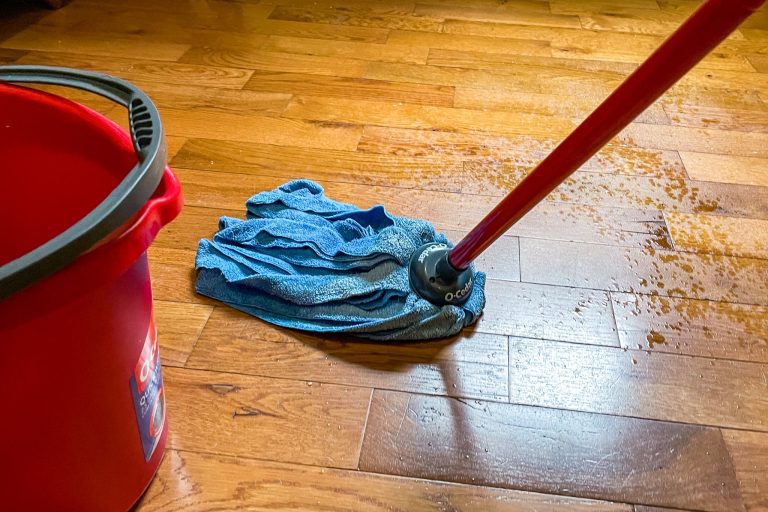What to Look for in a Step Ladder And How to Avoid Common Mistakes?
When selecting a step ladder, prioritize stability, material, height, and weight capacity to ensure safety. Avoid common mistakes like overreaching or using damaged ladders to prevent accidents.
Purchasing the right step ladder can be the keystone to any home improvement or professional project. It’s essential to choose one that stands firm on the ground and won’t wobble. Materials like fiberglass or aluminum offer durability and lightness, but it’s crucial to consider the job at hand.
For residential fixes, a simple aluminum ladder could suffice, while fiberglass is better for electrical work due to its non-conductive nature. Depending on the tasks, the choice between a short or tall ladder varies, but always remember that it should be high enough for you to reach your work comfortably without standing on the top rung. Ladders have varied weight capacities, and underestimating the importance of this aspect can lead to dangerous outcomes. Ensuring that these key factors guide your purchase will help keep you safe as you climb up to tackle those hard-to-reach tasks.
Selecting The Right Step Ladder
Selecting the right step ladder involves more than just choosing a height. Different tasks require different ladders. It’s essential to consider the job at hand, personal safety, and the ladder’s durability.
Height Considerations For Safe Reach
Selecting a step ladder of the appropriate height is crucial for safety and efficiency. The rule of thumb is to never stand on the top rung or step. Aim for a ladder height that allows you to reach your work area comfortably without stretching.
- The ladder should be tall enough that the task area is within easy reach.
- Ensure that your feet can stay firmly on the middle rungs while you work.
- For most indoor tasks, a stepladder between 4 to 6 feet usually suffices.
Material Makeup: Weighing Aluminum Vs. Fiberglass
Ladder materials vary, mainly between aluminum and fiberglass, each with its benefits and best-use scenarios.
| Material | Pros | Cons | Best Used For |
|---|---|---|---|
| Aluminum | Lightweight, easy to move | Conducts electricity | General maintenance where electrical hazards are absent |
| Fiberglass | Non-conductive, durable | Heavier than aluminum | Electrical work or environments with electrical risks |
Consider aluminum ladders for lightweight mobility but avoid them around electricity. Use fiberglass ladders for electrical safety and durability, despite their weight.
Critical Safety Features
When choosing a step ladder for your home or workspace, safety comes first. A sturdy ladder can prevent accidents. Key features ensure a ladder is safe to use. Take note of these features to make an informed choice.
Stability Must-haves: Feet And Spreaders
Two components play a vital role in ladder stability: feet and spreaders. Strong feet keep the ladder grounded. Non-slip material should cover the feet. Check for a firm grip on various surfaces. Avoid smooth, rounded feet that might slip.
Spreaders connect the two sides of the ladder. They lock into place for a secure stance. Ensure spreaders are intact and function smoothly. Broken or weak spreaders compromise ladder safety. Here’s what a safe ladder’s base should feature:
- Anti-slip rubber or pads on feet for grip.
- Feet must not wobble or show damage.
- Metal spreaders that snap firmly without bending.
Ensuring Durability: Rung And Side Rail Check
Ladder longevity relies on sturdy rungs and side rails. Every step should be secure. Rungs must handle your weight without bending. Side rails give the ladder its shape. They must be rigid and crack-free. Regular checks are vital to catch wear and tear early.
| Part | Check for |
|---|---|
| Rungs | Stability, no bends, secure attachments. |
| Side Rails | No cracks, sturdy material, no flex. |
Perform these checks before each use:
- Inspect rungs for damage or looseness.
- Review side rails for any visible defects.
- Ensure all connections are tight and secure.
Weight Capacity And Duty Rating
Weight capacity and duty rating are critical when choosing a step ladder. A ladder’s weight capacity signifies the total weight it can hold without any risk. This includes both the person’s weight and any materials or tools they might carry. The ladder’s duty rating, classified by the American National Standards Institute (ANSI), indicates the ladder’s strength and durability. Selecting the right ladder for the job ensures safety and extends the ladder’s lifespan.
Understanding Weight Limits
Every step ladder has a maximum weight limit it can safely support. Exceeding this limit poses safety hazards, including the risk of the ladder breaking. Weight limits are not suggestions; they are strict guidelines to follow. Overlooking this critical factor can lead to accidents and injuries.
| Type | Weight Capacity |
|---|---|
| Type lll | 200 lbs |
| Type ll | 225 lbs |
| Type l | 250 lbs |
| Type lA | 300 lbs |
| Type lAA | 375 lbs |
Choosing According To Usage Frequency
Consider how often you will use the ladder before picking one. For occasional home use, a lighter duty rating might suffice. Frequent or industrial use demands a ladder with a higher duty rating. These options withstand regular stress and offer better longevity.
- Light-Duty: Good for home or light usage.
- Medium-Duty: Ideal for painters and contractors who use ladders often.
- Heavy-Duty: Best for industrial environments with daily ladder usage.
Take time to assess the specific needs, including weight and frequency. A well-informed choice prevents common mistakes and guarantees safe ladder use for years.
Additional Functionalities
While looking for the right step ladder, focusing on extra features can lead to a safer, more convenient experience. Let’s explore some additional functionalities that enhance a step ladder’s usefulness for various tasks.
The Convenience Of Tool Trays
A step ladder with a tool tray provides a spot to keep tools within easy reach. It means no more climbing down repeatedly, which saves time and effort.
Consider these benefits of tool trays:
- Safety: Keeps your hands free to maintain balance.
- Efficiency: Tools and parts stay organized.
- Productivity: Reduces the need to ascend and descend.
Extras: Folding Mechanism And Top Platform
Beyond the basics, a folding mechanism and a top platform add significant value. A swift folding action enables easy storage. A stable top platform offers extra standing space.
Must-have features include:
| Feature | Advantages |
|---|---|
| Folding Mechanism |
|
| Top Platform |
|
Avoiding Common Mistakes
Choosing the right step ladder is more than picking the right height. A true handyman knows the importance of using a ladder safely to avoid mishaps. Below are essential tips for preventing common ladder mistakes.
Never Skip The Pre-use Inspection
Each use requires a quick check. Ensure your step ladder is in top shape before climbing. Examine for damage, corrosion, or loose parts. Any defect can lead to accidents.
- Look for bent or broken steps.
- Ensure all screws are tight.
- Check the stability of spreaders.
The Misstep Of Overreaching
Stay safely centered between the side rails. Never lean too far to one side; your belly button should not pass the ladder’s edge. Use these steps for safer reach:
- Move the ladder rather than stretch.
- Keep your body square with the task.
- Maintain three points of contact.
Overreaching can cause tip-overs and injuries. It’s simple – move the ladder, don’t stretch.
| Check For: | Signs of Danger: |
|---|---|
| Steps | Bends or cracks |
| Joints | Looseness |
| Locks | Smooth operation |
Maintenance Tips For Longevity
Maintenance Tips for Longevity play a pivotal role in ensuring the safe and durable use of step ladders. Regular upkeep not only extends the ladder’s lifespan but also guarantees optimal performance. Neglect can lead to accidents and reduced efficiency. The following maintenance tips will help preserve your ladder for years.
Cleaning Best Practices For Step Ladders
Clean ladders remain safe and functional. Dirt can hide damage or cause slips. Follow these best practices to keep ladders in top condition:
- Wipe after use to remove debris.
- Use mild soap and water for a deep clean.
- Avoid harsh chemicals that might corrode metal or weaken plastic.
- Dry completely to prevent rust on metal parts.
- Check for and remove any sticky residues.
Storage Solutions To Prevent Wear And Tear
Proper storage shields ladders from damage. Here are easy steps to prevent wear and tear:
- Store in a clean, dry space.
- Avoid placing heavy objects on top of the ladder.
- Hang it to keep it off the ground.
- Ensure it’s fully collapsed and locked in a secure position.
- Protect from extreme temperatures.
| Task | Frequency | Notes |
|---|---|---|
| Cleaning | After each use | Helps identify any potential issues. |
| Inspection | Monthly | Check for loose screws or damage. |
| Lubrication | Annually | Keeps moving parts functioning smoothly. |
| Storage | Continuously | Maintains structure and prevents accidents. |
Implementing these simple yet effective maintenance tasks will keep your step ladder reliable and extend its life expectancy. Ensure to periodically review your ladder’s condition and retire it when needed for utmost safety.
Frequently Asked Questions For What To Look For In A Step Ladder And How To Avoid Common Mistakes?
What Are Key Features In A Step Ladder?
Selecting a step ladder requires attention to its height, build quality, stability features like wide steps and anti-slip feet, and load capacity. It should match the task’s demands, ensuring safety and efficiency.
How To Determine Proper Step Ladder Size?
To determine the proper step ladder size, measure the highest point you comfortably can reach when standing on the ladder’s third-highest step. The ladder should be tall enough to avoid overreaching but not too tall that it becomes unstable.
What Safety Precautions Are Needed With Step Ladders?
Always inspect the step ladder before use, ensure locking mechanisms are engaged, place it on level ground, and never climb higher than the labeled safe step. Consistently maintain three points of contact while ascending or descending.
Can Step Ladder Load Capacity Vary?
Step ladder load capacity can significantly vary; it’s categorized by duty ratings ranging from light-duty for household tasks to industrial-grade for heavier loads. Always choose a ladder with a capacity that exceeds your combined weight and the tools’ weight.
Conclusion
Selecting the right step ladder is crucial for both safety and efficiency. Ensure it meets your specific needs, has a sturdy build, and adheres to safety standards. Avoid common pitfalls by doing your homework before buying. A smart choice now means a safer climb later.


